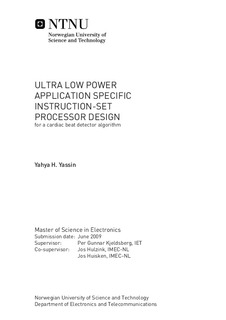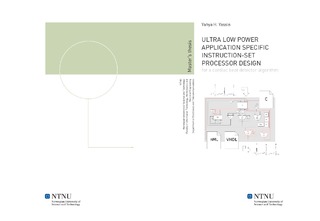| dc.description.abstract | High efficiency and low power consumption are among the main topics in embedded systems today. For complex applications, off-the-shelf processor cores might not provide the desired goals in terms of power consumption. By optimizing the processor for the application, or a set of applications, one could improve the computing power by introducing special purpose hardware units. The execution cycle count of the application would in this case be reduced significantly, and the resulting processor would consume less power. In this thesis, some research is done in how to optimize a software and hardware development for ultra low power consumption. A cardiac beat detector algorithm is implemented in ANSI C, and optimized for low power consumption, by using several software power optimization techniques. The resulting application is mapped on a basic processor architecture provided by Target Compiler Technologies. This processor is optimized further for ultra low power consumption by applying application specific hardware, and by using several hardware power optimization techniques. A general processor and the optimized processor has been mapped on a chip, using a 90 nm low power TSMC process. Information about power dissipation is extracted through netlist simulation, and the results of both processors have been compared. The optimized processor consume 55% less average power, and the duty cycle of the processor, i.e., the time in which the processor executes its task with respect to the time budget available, has been reduced from 14% to 2.8%. The reduction in the total execution cycle count is 81%. The possibilities of applying power gating, or voltage and frequency scaling are discussed, and it is concluded that further reduction in power consumption is possible by applying these power optimization techniques. For a given case, the average leakage power dissipation is estimated to be reduced by 97.2%. | nb_NO |

